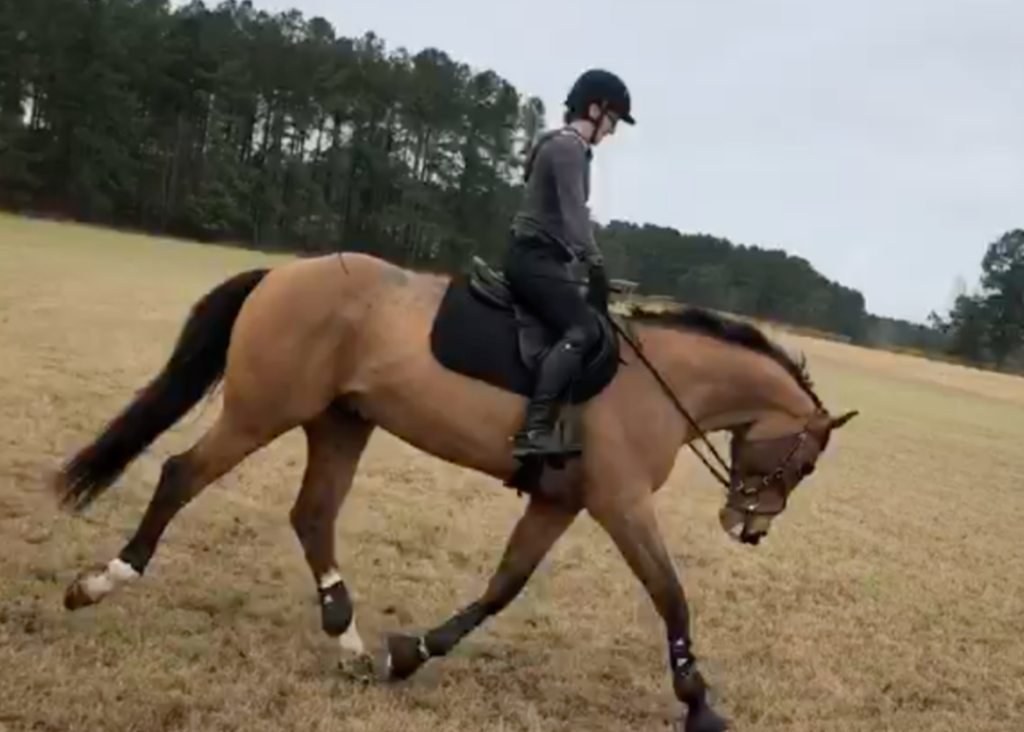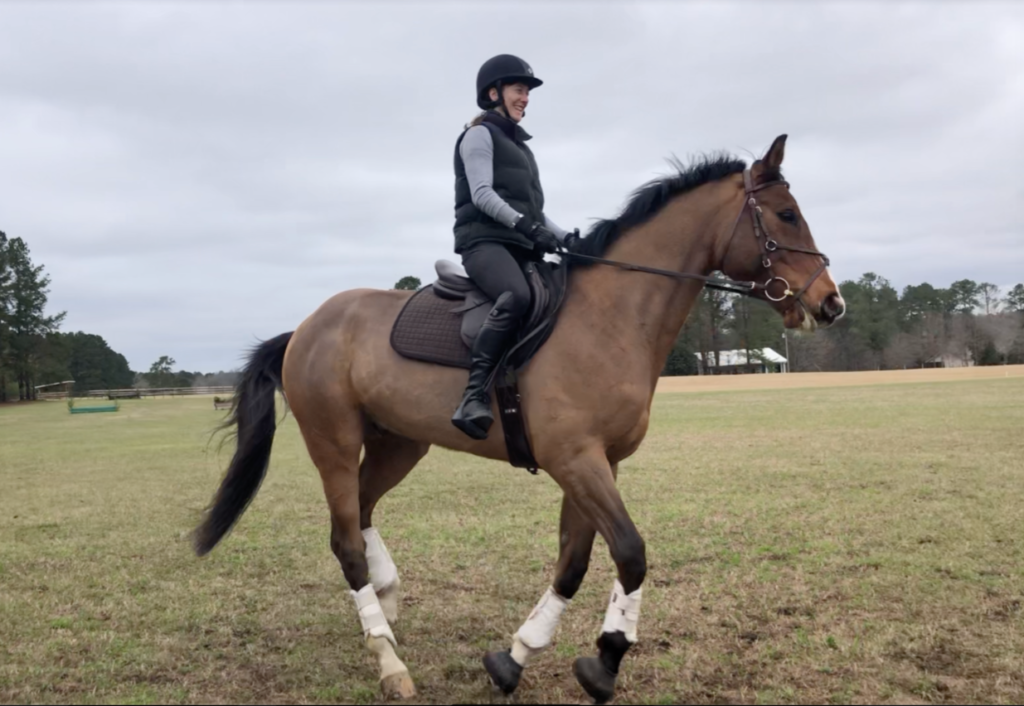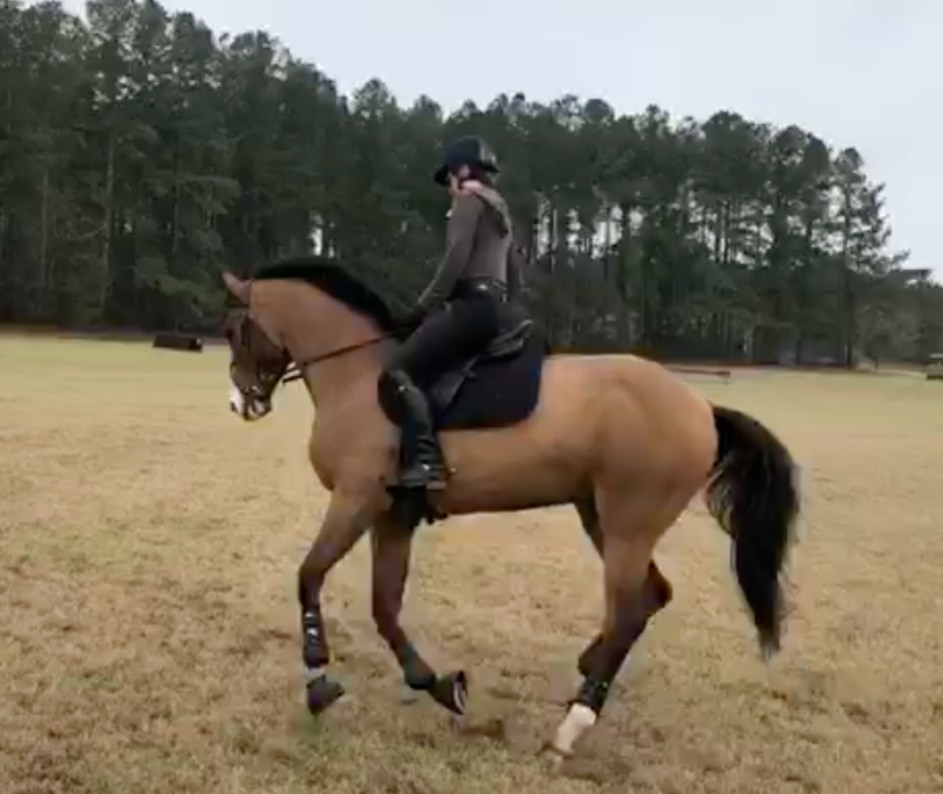
Best of JN: The Value of Stressage, I Mean Dressage
“Dressage has been a whole new country for me, but the value of learning it has been almost incalculable.” In this week’s Best of Jumper Nation, Susan Glover explores why dressage has been so important in her training regiment.
How much cross-training do you tackle with your jumpers? What kind? I’ve done a bit of a lot of non-jumpery things with Steve, including dressage. Dressage has been a whole new country for me, but the value of learning it has been almost incalculable. When I came back to riding after graduate school, I eventually found my way from hunters to the jumper ring and started on a somewhat erratic journey toward figuring out what was an entirely new set of tools. Dressage was mildly within my sights, but not really; I was more interested in figuring out what timed first jump off and Table II, Sec. 1 meant. I will admit here that I still forget the tables!
My first real experience with trying to “do” dressage came when I began training with eventers who had those skills, and the dressage instructors they themselves used. I’d been a hunter princess throughout my childhood and my talents tended more toward getting a lofty, gappy jump and placing in the hack on a sewing machine (hint: hide behind other horses when you have to trot). Dressage was essentially a closed book. 20 meter circle? Throughness? Lossgelassenwhat? Instead of the jumper tables, now I had to remember the Training Pyramid so I could answer when my trainer Packy demanded to know what comes after connection (hint #2: it’s a little like vroom!).
 Photo by Patti Giles.
Photo by Patti Giles.
This was all very confusing, and it didn’t help that the way I rode hunters was in a nice, soft half seat much of the time. Now I had to sit up straight, with my behind IN the saddle and understand that my seat itself could be a really important aid. No more inside rein to make a nice, wide, pretty turn! You use your outside aids to carve those turns, and god help you if the horse’s hind end is somewhere out behind him; it should be underneath! Power comes from behind! Leg, leg, leg, more leg until he is off his forehand and through!!! Shorten those reins! Sit up straighter! MORE FORWARD!
 Photo by Patti Giles.
Photo by Patti Giles.
However, with this new way of riding, I can sit on my powerful little WB right up to the base and get a perfect, balanced, huge jump. I can ask him to shorten or lengthen his stride and get an immediate response, he can move off my leg, take the inside turn, slice a big oxer, leave out a stride here, and then sit down to stick another one in there. We can do tempis, we can half pass, counter canter, produce an excellent, engaged medium trot, and even, when we’re very, very, VERY correct, we can do a few seconds of a canter pirouette.
Now, to be very honest, I have done two dressage tests in a competition and I forgot both of them halfway through. I have three degrees but got lost after “D-M: Leg yield right.” Charlotte Dujardin has nothing to fear from me!
 Photo by Patti Giles.
Photo by Patti Giles.
Regardless, the value of this work is clear. Physically, it has made my horse stronger and more responsive in general. He is built like a tank, albeit an elegant one, and the lightness that comes from working correctly over his back and using his fat little butt has helped me out as his rider. It has been a boon to me mentally, as well, deepening my understanding of the mechanics of horse movement and how we work together.
Top riders in the jumping disciplines already know the benefit of dressage, but even for those of us not doing grand prix, this type of training is incredibly useful. And, much to my surprise, I have found it to be rewarding and even (though not in the middle of forgetting my test) fun! Dressage to me is about harnessing the horse’s power and directing it correctly and effectively.
 Photo by Patti Giles.
Photo by Patti Giles.
While I wait to get back to the show ring, I continue to push forward in our dressage training because the benefits for jumping keep growing. If you haven’t dipped your toe into these waters, give it a try! I can promise you won’t regret developing these skills. Also…if you end up successfully completing a dressage test, first: congratulations, and second: let me know how you did it!





